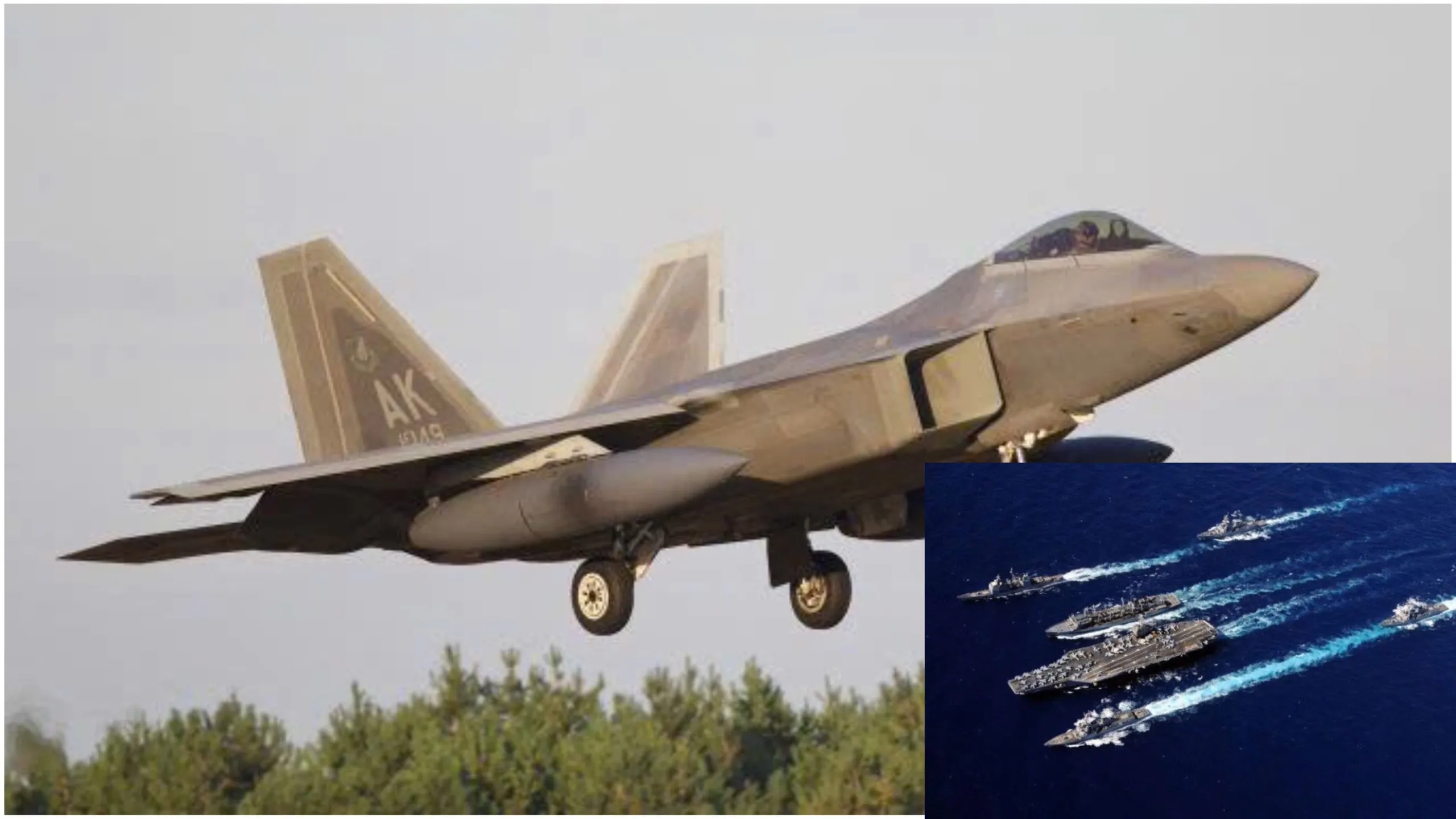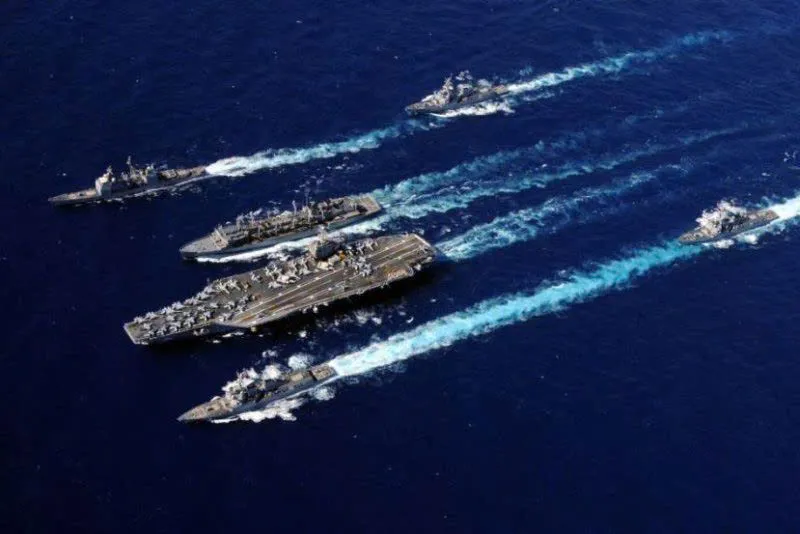
The US Central Command (CENTCOM) announced on August 8 that 12 F-22 Raptor stealth fighters have been deployed to the Middle East. The move is aimed at responding quickly to potential threats from Iran and Iran-backed forces targeting Israel and the US military in the region. The presence of F-22 fighters is not only part of a comprehensive defense strategy, but also sends a strong message about the US’s readiness to respond and protect allies in times of increased tension.

The 12 F-22s are the latest advanced weapons that the US has sent to the region to send a strong message from Washington to Tehran. Iran has vowed to attack Israel in response to the assassination of Hamas leader Ismail Haniyeh. However, it is unclear when the attack will take place.
A few days ago, 12 F-22s took off from Elmendorf-Richardson Air Force Base, Alaska. The fighters traveled about 10,300km.
A US official told the magazine *Air & Space Forces* that 12 F-22 stealth fighters made a long flight across North America and the Atlantic, landing temporarily at RAF Lakenheath air base in the UK before continuing their journey across the Mediterranean. There, the planes were refueled in the air and continued on to the Middle East.
Although the US Air Force refused to announce the exact landing location in the Middle East for security reasons, Pentagon deputy press secretary Sabrina Singh explained that the F-22 deployment was intended to enhance defense capabilities and provide more strategic options for the US military in the region. Ms. Singh emphasized that the presence of F-22 fighters sends a clear message of strong deterrence, and demonstrates the US’s efforts to ease tensions in the region facing many uncertainties.

The US Navy’s USS Abraham Lincoln aircraft carrier strike group. Photo: UPI.
Also on August 8, the USS Abraham Lincoln aircraft carrier strike group left its bases on Guam and Saipan to depart for the Middle East. The nuclear-powered aircraft carrier USS Abraham Lincoln moved to the Middle East carrying a squadron of F-35C Lightning II stealth fighters, three squadrons of F/A-18E/F Super Hornet carrier-based fighters, a squadron of electronic warfare and early warning aircraft, and two squadrons of helicopters.
In a related development, an official of the administration of US President Joe Biden said Iran “has no right” to attack Israel in retaliation for the assassination of a Hamas leader, according to the Times of Israel.
On August 7, Iranian President Masoud Pezeshkian had an important phone call with French President Emmanuel Macron to discuss the escalating tensions in the Middle East. During the conversation, Mr. Pezeshkian stressed that Iran has always considered avoiding war and striving to maintain global peace and security as core principles of the country. However, he also affirmed that within the framework of international treaties and laws, Iran will not stand idly by when its interests and security are threatened. This statement not only reflects Iran’s determination to protect its national interests but also sends a strong message of its readiness to deal with external aggression.
Iran is also said to be reconsidering a multi-pronged attack on Israel. Iran International on August 7 quoted informed sources as saying that Iranian President Masoud Pezeshkian had called on Iran’s supreme leader to prevent any direct attack by Tehran on Israel to avoid escalating tensions into an unwanted war.
According to some sources, Tehran seems to have accepted the hypothesis that the Hamas leader’s room in the Iranian capital was bombed and detonated remotely. The US has conveyed that the attack was the result of an intelligence operation carried out by Israel. However, fortunately, the incident did not cause any casualties to any Iranian citizens. This event not only highlights the current tensions but also shows that the underground confrontation between the forces in the region is becoming increasingly fierce and complicated.



